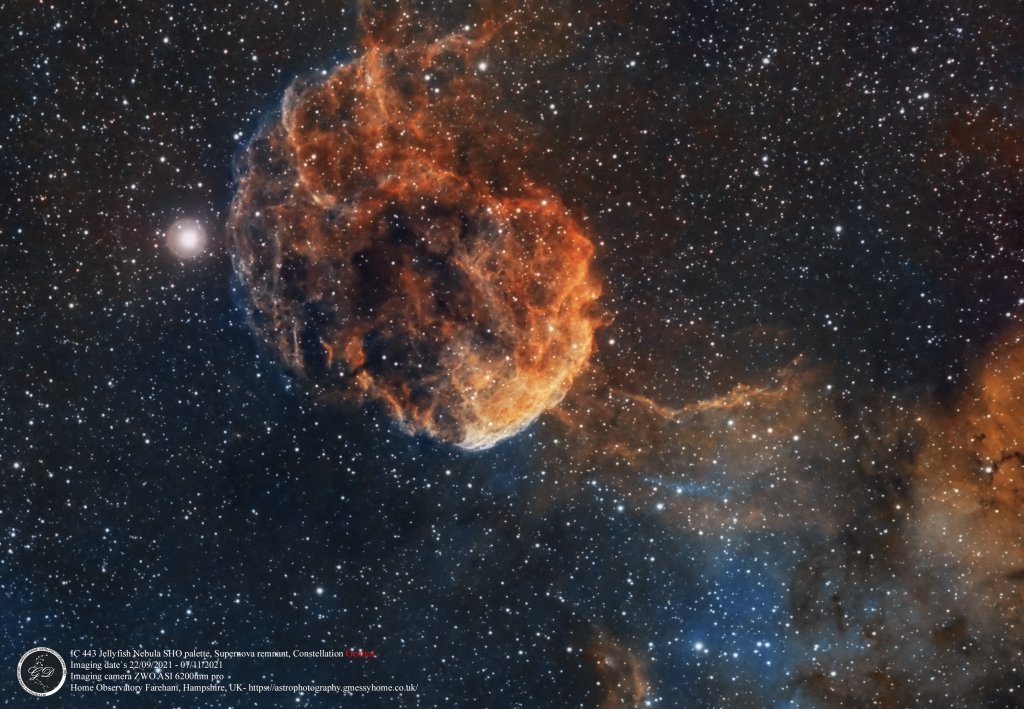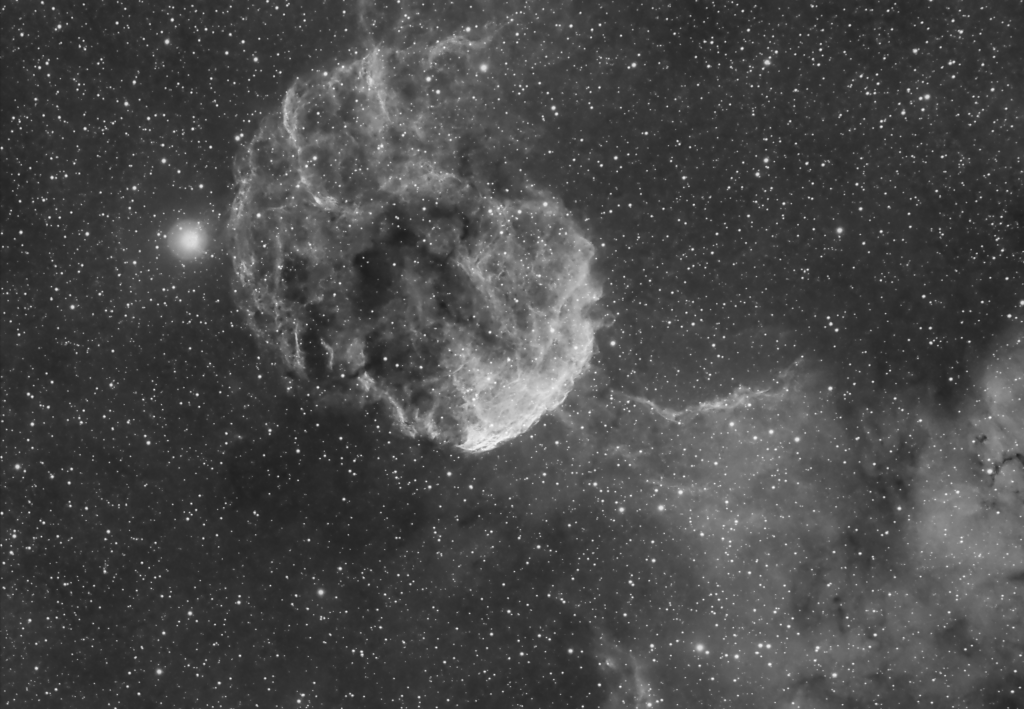IC 443 is an extended source, having an angular diameter of 50 arcmin (by comparison, the full moon is 30 arcmin across). At the estimated distance of 5,000 ly (1,500 parsec) from Earth, it corresponds to a physical size of roughly 70 light years (20 parsec).
The SNR optical and radio morphology is shell-like (e.g. a prototypical shell-like SNR is SN 1006), consisting of two connected sub-shells with different centers and radii. A third, larger sub-shell—initially attributed to IC 443—is now recognized as a different and older (100,000 years) SNR, called G189.6+3.3.[1]
Notably, IC 443 X-ray morphology is centrally peaked and a very soft X-ray shell is barely visible.[2] Unlike plerion remnants, e.g. the Crab Nebula, the inner X-ray emission is not dominated by the central pulsar wind nebula. It has indeed a thermal origin.[3] IC 443 shows very similar features to the class of mixed morphology[4] SNRs. Both optical and X-ray emission are heavily absorbed by a giant molecular cloud in the foreground, crossing the whole remnant body from northwest to southeast.
The remnant’s age is still uncertain. There is some agreement that the progenitor supernova happened between 3,000[3] and 30,000[5] years ago. Recent Chandra[6] and XMM-Newton[7] observations identified a plerion nebula, close to the remnant southern rim. The point source near the apex of the nebula is a neutron star, relic of a SN explosion. The location in a star forming region and the presence of a neutron star favor a Type II supernova, the ultimate fate of a massive star, as the progenitor explosion.

Technical card of image
Imaging telescopes or lenses: William Optics 81GT IV
Imaging cameras: ZWO ASI 6200 MM Pro
Mounts: Celestron Advanced VX Goto GEM Celestron AVX
Guiding telescopes or lenses: William Optics RedCat 51 Petzval APO Redcat 51
Guiding cameras: ZWO ASI522mc-pro color ZWO
Software: Adobe Photoshop 2021 · PixInsight 1.8 Ripley PinInsight 1.8.8
Filters: ZWO SII 7nm 2″ · ZWO OIII 7nm 2″ · ZWO H-alpha 7nm 2″
Dates:Feb. 22, 2021 , Sept. 22, 2021
Frames:
ZWO H-alpha 7nm 2″: 22×300″ (1h 50′) (gain: 135.00) -15C bin 1×1
ZWO OIII 7nm 2″: 13×300″ (1h 5′) (gain: 135.00) -15C
ZWO SII 7nm 2″: 14×300″ (1h 10′) (gain: 135.00) -15C bin 1×1
Integration: 4h 5′
Darks: 25
Flats: 25
Bias: 50
Avg. Moon age: 13.03 days
Avg. Moon phase: 86.38%
RA center: 06h17m40s.65
DEC center: +22°42′43″.3
Pixel scale: 2.022 arcsec/pixel
Orientation: -177.890 degrees
Field radius: 1.232 degrees
More info:Open
Resolution: 3604×2497
Locations: Gamaholjad, Fareham, United Kingdom
Data source: Backyard



